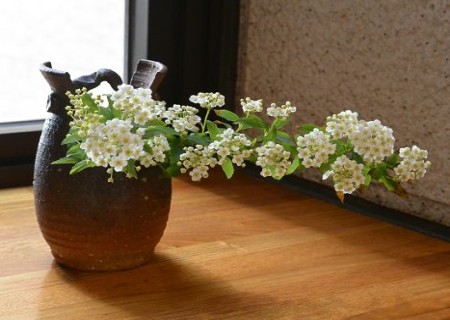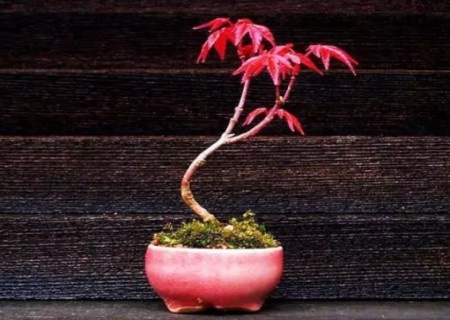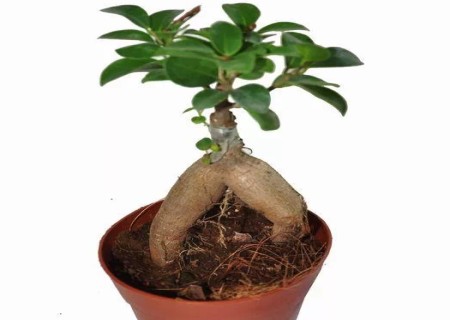How to raise bonsai of pearl plum
Pearl plum is like a graceful beautiful girl, with the style of plum blossom, the elegance of chrysanthemum and the elegance of willow, giving people the enjoyment of visual beauty and quiet understanding of soul. Pearl plum is named for its design and color like pearls. Its flowers, leaves are beautiful, the flowering period is very long, is a very popular ornamental tree species in the garden application, can be planted alone, row planting, cluster planting effect is very good.

Pearl plum has strong germination and regeneration ability, wide cultivation range, lax soil requirements, and extensive management of water and fertilizer, temperature and light, which is suitable for greening and beautification cultivation in various places. The most suitable temperature for growth is 18 ℃ ~ 32 tons. If the temperature is suitable, the light is sufficient, coupled with reasonable water and fertilizer management, Pearl Plum will be able to enter the luxuriant growth period, with pearly buds glowing on the crown.
Culture methods of pearl plum bonsai:
1. Soil: Pearl plum is not strict with the soil, but it grows better and blossoms more luxuriantly when cultivated in deep and fertile sandy soil.
2. Light: Pearl plum can bear half shade, but it is good to grow in the sun.
3. Watering: Pearl plum should be watered in time when it is dry in spring, thoroughly in summer and autumn to keep the soil from drought, and one time of antifreeze water before winter.
4. Fertilization: Pearl plum does not have high requirements for fertilization. When it is just cultivated, it needs to apply enough base fertilizer to meet its growth requirements, and generally no longer apply topdressing. In the future, combined with winter management, base fertilizer should be applied every 1-2 years.
5. Pruning: after pearl plum blossom, the residual flower branches, disease and insect branches and old and weak branches should be pruned in time to keep the plant type neat, avoid nutrient consumption, and promote its strong growth and luxuriant flowers.
6. Insect diseases: the main diseases of Pearl Plum are: leaf spot, powdery mildew, brown spot, and the main insects to prevent are: beetles, wax cicada, etc., to achieve early control to promote the healthy growth of plants.
Note:
The main results are as follows: 1. Pearl plum has strong adaptability and does not have high requirements for fertilizer. except for a small amount of base fertilizer for newly planted plants, it does not need rotating fertilizer, but it needs watering. Generally, it is watered 2-3 times from leaf bud germination to flowering, and the Beginning of Autumn is watered 2-3 times from post-frost to pre-frost.
2. Spraying Zhuangtiling at the bud stage can make the buds strong, the petals enlarged, the flowers colorful and the flowers fragrant.
"the beads are as beautiful as neon clothes, it is suspected that hibiscus covers the makeup of Dai; at the beginning of the night in the light rain, the plum fragrance falls on the strings of the pipa." This is a poem about Pearl Plum. Pearl plum beautiful without losing elegance, Ling frost proud snow, named after the design and color like pearls.
Whenever I see pearl plum, I unconsciously think of the poem "like a string of big beads and small beads falling off a jade plate." the poet Bai Juyi originally described the beautiful sound of the pipa, like pearls falling on a precious jade plate. Now it seems that the unopened buds of Pearl Plum and the blooming white jade flowers complement each other and complement each other, which does not correspond to the phrase "like a string of big beads falling into a jade plate."...
About Pearl Plum:
Pearl plum alias spray snowflake, snow willow, Spiraea. Because of its dense flowers, such as snow spray, named snow spray; and because its leaves are shaped like willow leaves, flowers as white as snow, also known as "snow willow"; and then because of its chrysanthemum charm, so the name Spiraea. Pearl plum, growing on the side of the road, on the rocks, on the edge of the field, clumps of branches stretching out from the bottom, the leaves green and delicate, thin, like willow leaves.
Time: 2019-05-31 Click:
- Prev

How to raise red maple bonsai
Red maple is a famous scenic tree in China, which is whirling and beautiful. It is not only suitable for solitary planting or group planting between mountains and rocks, green pines and cypresses, but also for family potted plants or bonsai ornamental, and can also be cut into vases as cut flowers. What are the techniques for making red maple bonsai? what are the maintenance methods for red maple bonsai?
- Next

How to raise bonsai of ginseng and banyan tree
Ginseng banyan looks like a ginseng banyan, of course, it can't be eaten like ginseng. Ginseng banyan is very popular in recent years because it looks like ginseng, which means longevity. When cultivating ginseng banyan, if you can choose a pot full of ancient interest, it will certainly add to the elegant charm of ginseng banyan. Ginseng banyan is like a banyan tree.
Related
- Fuxing push coffee new agricultural production and marketing class: lack of small-scale processing plants
- Jujube rice field leisure farm deep ploughing Yilan for five years to create a space for organic food and play
- Nongyu Farm-A trial of organic papaya for brave women with advanced technology
- Four points for attention in the prevention and control of diseases and insect pests of edible fungi
- How to add nutrient solution to Edible Fungi
- Is there any good way to control edible fungus mites?
- Open Inoculation Technology of Edible Fungi
- Is there any clever way to use fertilizer for edible fungus in winter?
- What agents are used to kill the pathogens of edible fungi in the mushroom shed?
- Rapid drying of Edible Fungi

